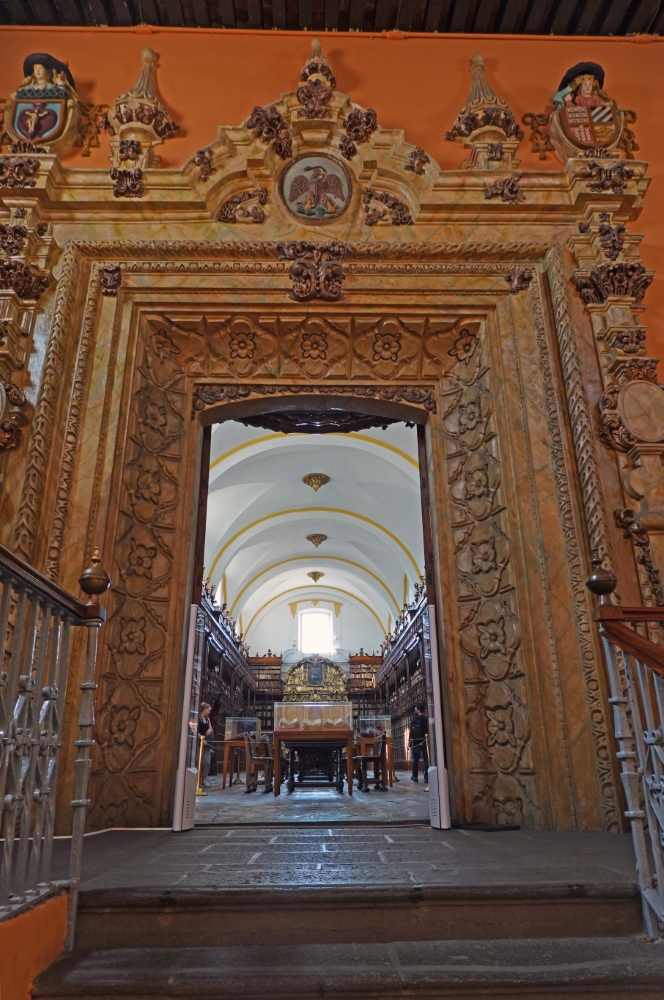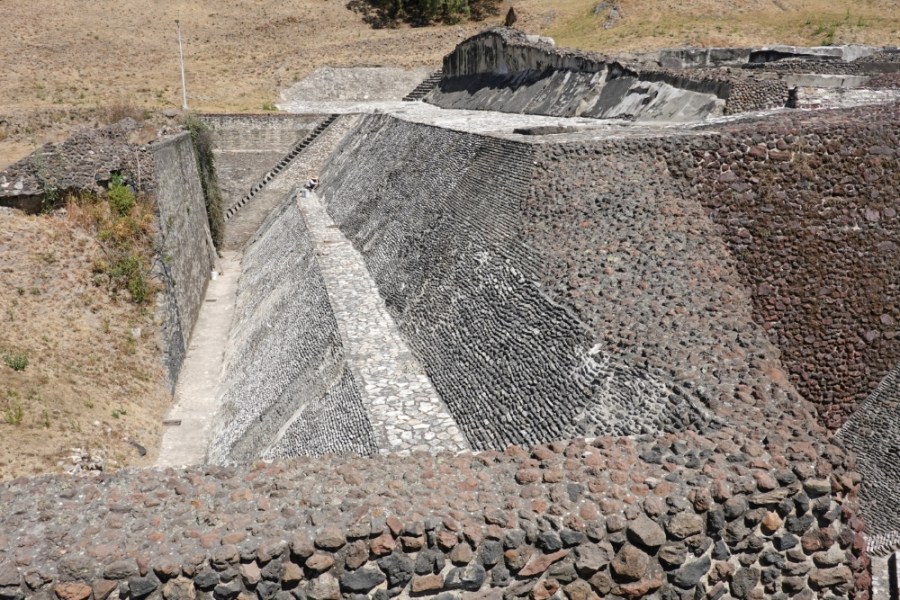
Winter in Mexico – January to April 2023

We like warm weather, so we try to spend winter months in areas where we don’t have to wear coats and hats to keep from shivering. We started off the year in Mexico to visit both familiar and new destinations. Our first-time visits included the cities of Puebla and San Miguel de Allende. Both have easily-walkable historical centers filled with churches, shops, restaurants, colorful buildings, and some quiet streets to wander about.
We rode a bus from Mexico City to Puebla, the 4th largest city in the country. Founded in 1531, the city sits in a valley at the foot of Popocatepeti, the 2nd highest volcano in Mexico, with the peak at 5,465 meters.
Street scenes



Many candy shops on this street

Mexican Revolution began here in 1910 when
police & federal soldiers tried to seize arms hidden in the house
Bullet holes from that fight still visible today on the exterior
House now is the Museum of the Mexican Revolution

Area used to flood from San Francisco River waters
Frogs attracted by the increased water


A zocalo (main square) landmark since 1777
Part of the historic center, which is a UNESCO World Heritage Site
Construction of the Cathedral Basilica of Puebla took over 100 years, from 1575 to 1690. It is the second largest cathedral in the country. The Baroque-style church was originally planned for Mexico City, but the hard and unstable ground in the capital made construction there too difficult.

Exterior made with pink, white, & yellow stones
Bells only in the north (left) tower




Cathedral interior

Primarily created by sculptor Manuel Tolsa

In just 1 of 14 side chapels



In 1646 Bishop Palafox y Mendoza donated his 5,000 books to the Colegio de San Juan y San Pedro in Puebla on the condition that the books were available to anyone who wanted to study and read them. Subsequently other individuals, bishops, and religious organizations donated to the Palafoxian Library, which now has over 40,000 books from the 15th to 20th centuries. It is the first public library in Mexico and recognized by UNESCO as the oldest library in the Americas.




We walked 6.5 kilometers from our apartment to Cuexcomate, the world’s smallest volcano. We ventured down the stairs into the inactive vent that weighs about 40 metric tons, stands 13 meters tall, and measures 23 meters in diameter. Many, many years ago the indigenous people stored grain and meals in the volcano’s cool interior. Later during the Spanish conquest, the locals placed the bodies of suicide victims inside the cone. A residential neighborhood now surrounds the site.



We took a 30 minute side trip from Puebla to the town of Cholula, reportedly the oldest continually inhabited place in North America, starting in 500 BC. The most visited sites in the town are the Iglesia de Nuestra Senora de los Remedios and the Great Pyramid, discovered in the hill below the church in the early 1900s.
The indigenous people built the pyramid from adobe bricks in honor of Quetzalcoatl, their feathered serpent god. By the 12th century the temple was probably abandoned after a new place of worship was built elsewhere in the city during the governing of the Toltec-Chichimecas. In the early 1500s the Spanish conquered the area and built a Catholic church on top of the pyramid. It’s not clear if the Spanish intentionally buried the pyramid before constructing their new church, if the ancient structure was already covered with ash from the large, nearby volcanoes and dirt from 300+ years of neglect, or a combination of both.
The pyramid holds the record for being the largest one in the world, by volume that is. Its tallest portion is 54 meters, with the complex covering 18 hectares. Scientists began the excavation project the south side of the hill and their work is ongoing. We were not allowed to explore any of the 8-kilometer network of tunnels.





Beginning in the 16th century and continuing until today, Catholics conduct pilgrimages to Iglesia de Nuestra Senora de los Remedios. The yellow, hilltop church survived several earthquakes, followed by repairs to the Spanish colonial exterior and Baroque interior. The church is dedicated to the Virgin of Remedies, a variation of the Virgin Mary who focuses on the needs of the poor.



Popocatepeti (left) and Iztaccihuati (right)
16 kilometers apart
Like many cities in Mexico, San Miguel de Allende is filled with churches, a main square with trees and benches, and displays lots of color. Many expats from the US and Canada live here, plus quite a few tourists visit the friendly city.
The main attraction in the zocolo is Parroquia de San Miguel Arcangel, originally constructed in the 1700s and “upgraded” in the late 19th century. Zeferino Gutierrez, a self-taught, indigenous stonemason, designed the new, intricate exterior. Some historians believe he wanted the church to look quite similar to a Belgian church depicted on a postcard. And he reportedly drew the intricate plans in the sand with a stick for the construction workers and artisans. Some locals and visitors affectionately describe the church as a pink wedding cake. The Iglesia de San Rafael, with its majestic clock tower, stands to the left of the church’s main entrance.


Each day we spent some time enjoying the sights and sounds of the zocolo (main square.) The arch arcade looked especially beautiful in the evenings and mariachi bands entertained us, other tourists, and the locals in the garden.


Colorful street scenes





One morning we took an excursion to the small town of Atotonilco, population less than 600 inhabitants and just 11 kilometers northwest of San Miguel de Allende. The name of the town means “place of hot water.” We visited the Santuario de Jesus Nazareno because of its significance in the Mexican Revolution and its incredible artwork. As the insurgents were organizing their army in September of 1810, they took the banner of the Virgin of Guadalupe from this church to be their flag.


The church is nicknamed the “Sistine Chapel of Mexico” because of its beautiful wall and ceilings murals created over a 30-year period by artists Miguel Antonio Martínez de Pocasangre, José María Barajas and Juan Rodríguez Juárez. It continues to be an active place of worship and is a UNESCO World Heritage Site, with sometimes up to 5,000 visitors per week. Fortunately there were very few tourists at the church when we went.




Flowering cacti, a welcome sign of spring, in the San Miguel de Allende area:




